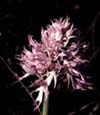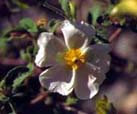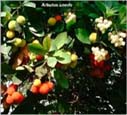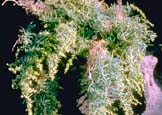 The plant landscape of the Aeolian islands
The plant landscape of the Aeolian islands
The formation of the Aeolian Islands
took place during the last 500,000 years (second
the last datings made by volcanologists)
and, unlike many Mediterranean islands,
total autonomy in relation to land nearby,
with which the archipelago seems not be ever
came into contact area. The populations of
plants and animals that are hosted in
Aeolian is the result of processes of
colonization (active or passive) of the
islands, during the past 7000 years.
The plant landscape of the Aeolian
Islands is now quite diverse, depending
on geographical features of each
islands. In cultivate abandoned grasslands
have settled on grass, including significant
extension as those of the western side of
Lipari, during the spring season, these
environments are brightened by the flowering
of many species of wild orchids, such as
small ofridi yellow (Ophrys lutea) or ofridi
flower of wasp (Ophrys tenthredinifera), or
the most common orchid italica (Ophrys
italic). The most interesting aspects of
this thermophilic vegetation is the
Cenchrus ciliaris, exist in Italy and
Aeolian limited to a few stations in Sicily.
The volcanic soil more acidic extend vast
cistete to cistus flowers in pink (Cistus
salvifolius), cistus with white flowers (Cistus
creticus) and, more localized, cistus
Montpellier (Cistus monspeliensis); examples
of particular value of this vegetation can
be observed in Vulcano (Valley Lentia),
Panarea (Punta del Corvo), Lipari (San
Salvatore), and a greater share in the
presence of specific microclimatic
conditions, cisteta tends to become denser
and transformed into another spot where
prevail the Corbezzolo (Arbutus unedo)
, heather (Erica arborea), the broom (Spartium
junceum) and in some locations, holm oak (Quercus
ilex) and chestnut (Castanea sativa), the latter probably introduced in
roman times.
|
 |
 |
 |
|
Orchidea italica
(Ophrys italica) |
cistus with
white flowers
(Cistus
creticus) |
Corbezzolo
(Arbutus unedo) |
This formations of forest was
the main motivation of a Natural Reserve,
one of the first protected areas fate in
Sicily: this was followed in the
establishment of additional reserves in all
the major islands except Lipari, and two
Natural Reserves Integral in the group of
islands to the east of Panarea (Basiluzzo,
Lisca Bianca, Bottaro, Dattilo) and
Strombolicchio.
The more inaccessible slopes and rocky of
volcanoes Aeolians are highly selective for
plant species, where only a few pioneers are
able to settle: among these, the most
widespread is the broom of Tirreno (Ginestra
Thyrrena), a leguminosa endemic in the
Aeolian islands and in Ponza that blooms
between May and June, coloring with a lively
yellow the summit of Stromboli and the Great
Crater, and many of the coasts of the
archipelago, where the species is quite
common.
The rocks exposed in the north and west host
a unique flora, rich in endemics: the
carnation velvety of Aeolian (Silene
hicesiae), the carnation of cliffs (Dianthus
rupicola ssp.aeolicus) and the Aeolian
cornflower (Centaurea aeolica) are
exclusive of the archipelago; the iberide
florida (Iberis semperflorens), the
finocchiella of Boccone (Seseli bocconei)
and many others are endemic in Sicily or in
the Tyrrenic area and they are also a part
expressive biodiversity of these islands.
The most interesting of this vegetation can
be observed in the western cliffs of Panarea,
in Stromboli, on the other hand, the cliffs
of Schicciole host another interesting
endemic Aeolian, the citiso of Aeolian (Cytisus
aeolicus), a family tree of pulses. For
whose conservation was launched a project
called Life-Nature "Eolife99", it was
already known as forage in Greek age: its
qualities were described by Theophrastus as
a "colitia of the Eolian.
The few sandy beaches host dune vegetation
rather impoverished; in Cala of Zimmari (Panarea)
at the beginning of spring bloom quite rare
species in their area of distribution, such
as the Malcomia ramosissima and the
Wahlenbergia nutabunda.
|
 |
 |
 |
|
the Aeolian cornflower
(Centaurea
aeolica) |
heather
(Erica arborea) |
la granata rupicola
(Bassia saxicola) |
More widespread is the vegetation of the
Aeolian coastal cliffs and bluffs
characterized by the presence of a
Plumbaginacea endemic in the archipelago and
nearby Capo Milazzo, the Limonium
minutiflorum, and other more common plants,
such as fennel marine (Crithmum maritimum)
and wild carrot (Daucus gingidium).
one of the most rare and endangered flora of
the European Union.